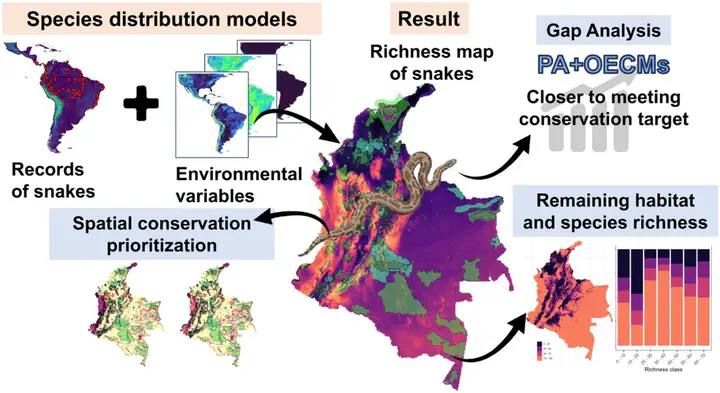On Protected Areas and Other Effective Area-Based Conservation Measures to Conserve Biodiversity. Exploring Their Contribution to Colombian Snakes

Abstract
Other effective area-based conservation measures (OECMs) have recently been implemented in countries such as Colombia and, together with protected areas (PA), are crucial biodiversity conservation strategies. Assessing the contribution of different area-based conservation frameworks (i.e., PA and OECMs) involves evaluating the representation degree of species’ geographic ranges, representation targets achievement (i.e., Gap analysis), priority areas for conservation, and their relationship with the remaining habitat. Snakes regulate prey populations, interfere with the behavior and diet of other species, can be bioindicators, and facilitate the transfer of energy and biomass between environments, making them a conservation priority. Currently, Colombia hosts > 300 snake species from nine families. Here, we explored the snake diversity pattern in Colombia and its relationship with remaining habitat. We also evaluated the degree of representation within PA and OECMs of species geographic distributions, species richness, and priority areas for conservation. Areas with the highest snake richness are in the Andean, Pacific, and Amazon regions; however, these are predominantly outside PA and OECMs. Representativeness of species ranges and representation targets within PA increased with the OECMs. The Caribbean and Andean regions have areas with the lowest remaining habitat. Our findings highlight that the OECMs contribute to the conservation of snakes in Colombia and complement PA. The Pacific, Orinoco, Amazon, and the northern Caribbean presented the highest concentration of priority areas for conservation and given the presence of indigenous people groups and large remaining habitat, these regions are most promising for creating new OECMs.